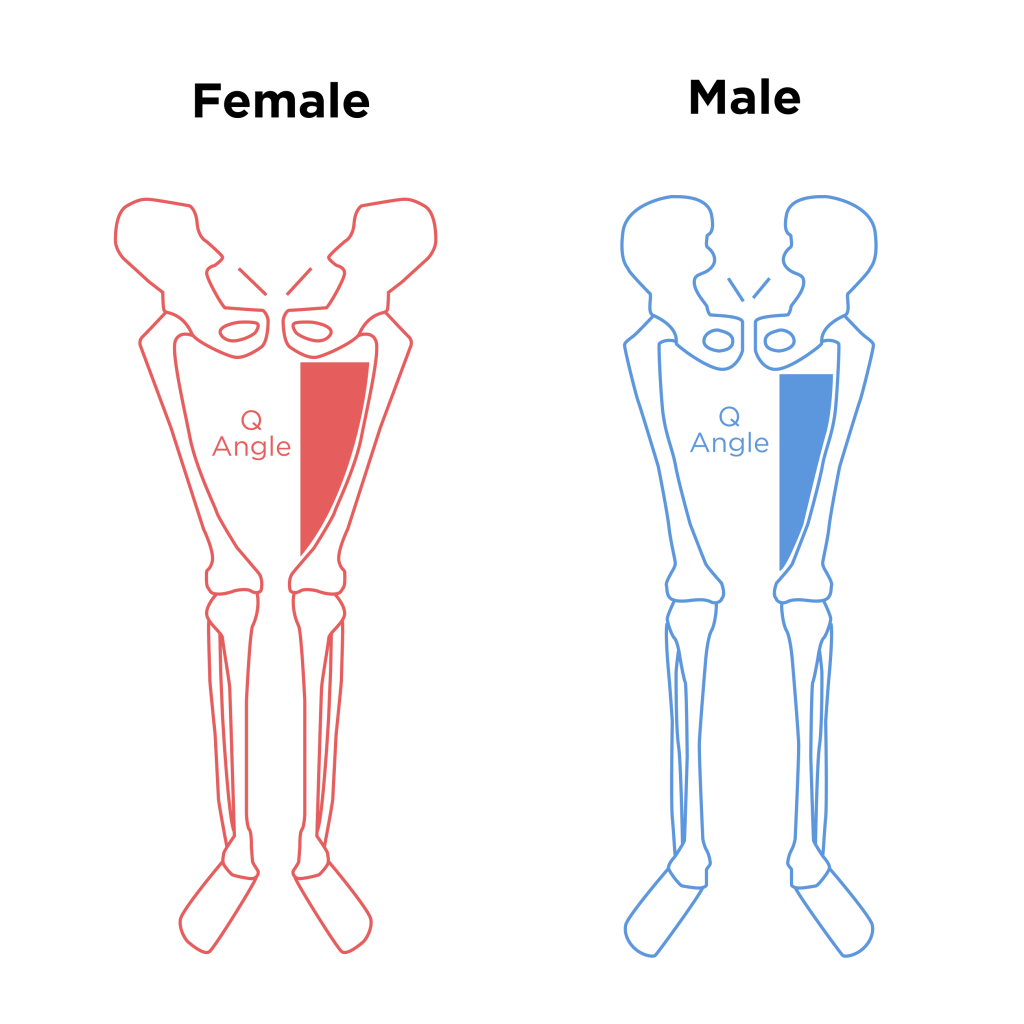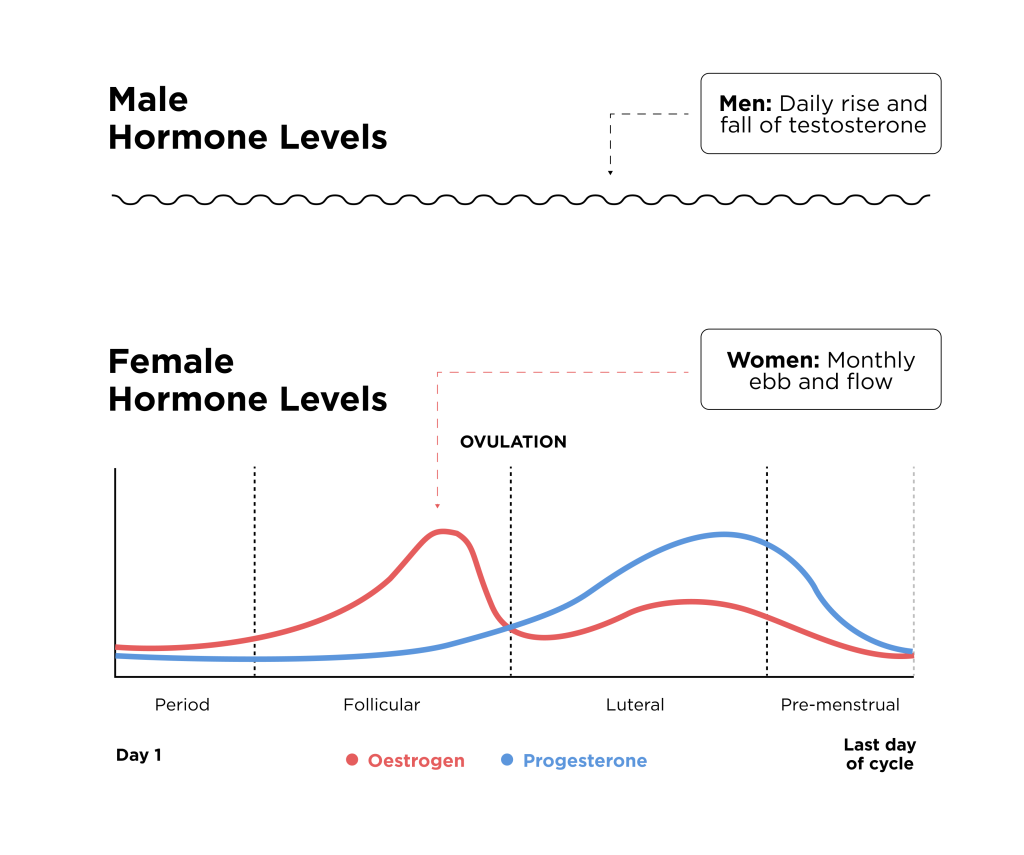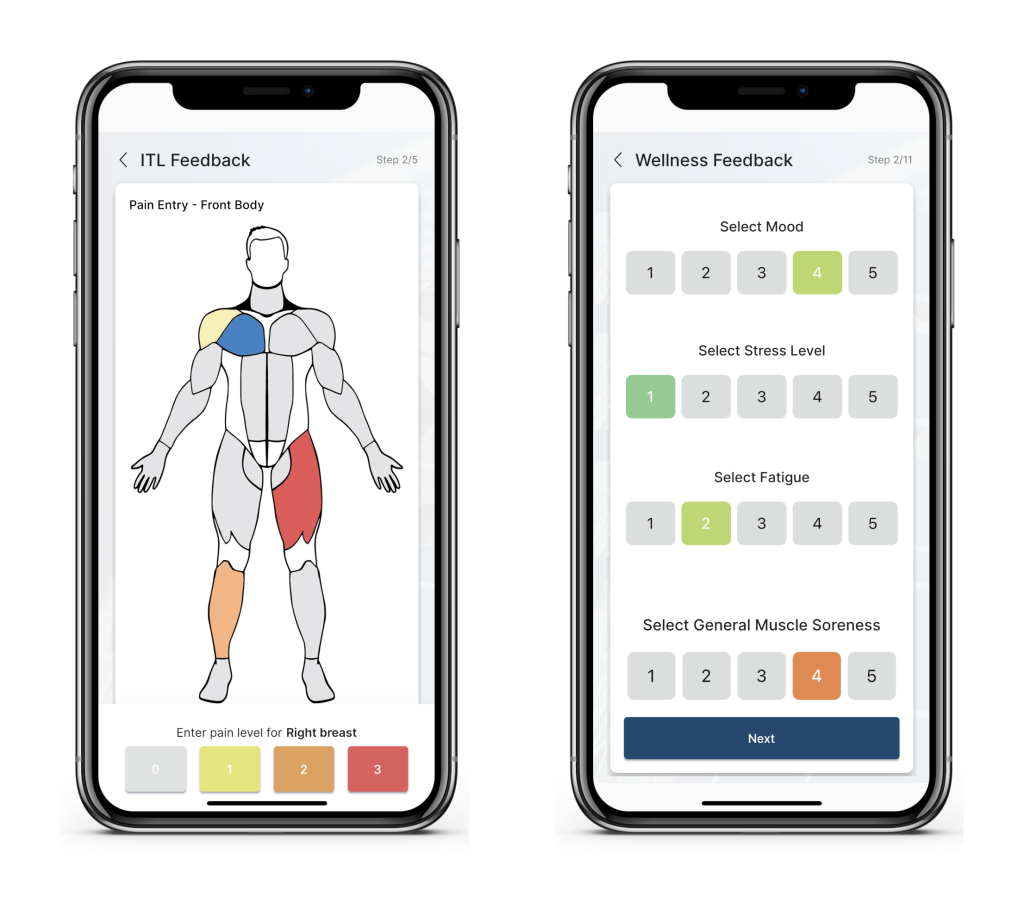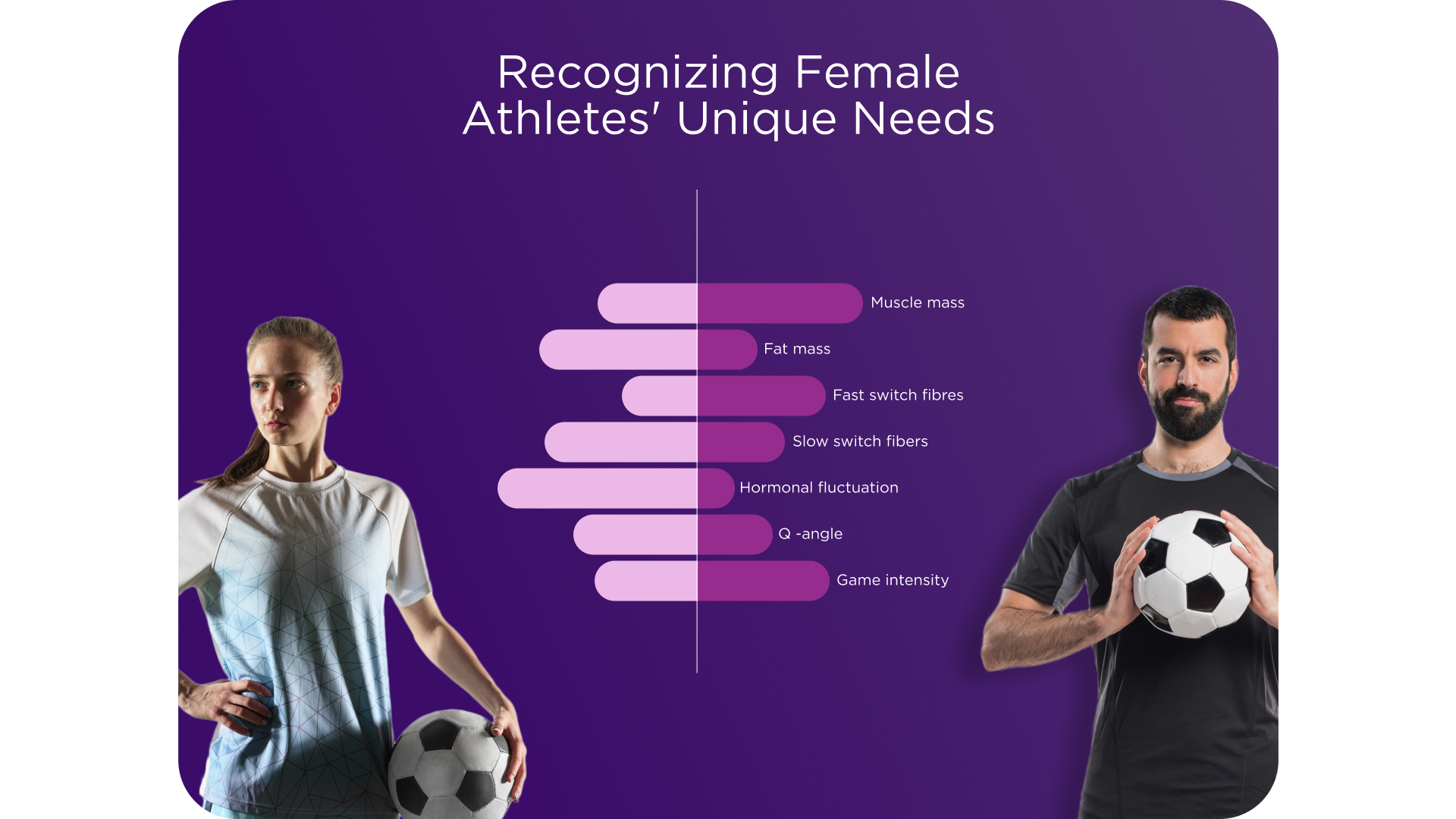In the world of sports, understanding the differences between female and male athletes is essential for optimizing performance, training strategies, and injury prevention. While both genders possess remarkable athletic abilities, there are distinct anatomical, physiological, and hormonal variations that set them apart. In this blog post, we will explore these differences and their impact on athletic performance.
Do I Need to Change My Modus Operandi?
As a woman who spent most of my professional career working with male categories in football, and later moved on to work with female categories, one of the most frequently asked questions was: What is the difference in working with male and female athletes?
The first time I asked myself this question was when I received the invitation to be a strength and conditioning coach of the Croatia women’s national football team. This was the period during which I thought intensely: Should I change my approach to female athletes? What are the key differences between male and female athletes? Do these differences affect their performance on the field and in what way?
The notable lack of research and data dedicated to the specific factors that need to be understood when working with female players is an issue that must be addressed. But what I found was…
Fundamental Anatomical, Physiological and Hormonal Differences Between Men and Women
These differences go far beyond the reproductive system and the primary reproductive hormones and can affect how women and men should be managed.
For example, anatomically speaking, men tend to have more muscle mass and a lower proportion of body fat than women. This difference is primarily influenced by hormonal factors such as testosterone, which promotes muscle development. Females typically have a higher percentage of body fat, which can serve as an energy reserve during long-duration activities.
The major differences between female and male skeletal muscles include variations in energy metabolism, fiber type composition, and speed of contraction. Male muscles have a higher capacity for anaerobic metabolism and are generally faster, with higher maximum power output than female muscles. Female muscles have been found to be more fatigue resistant and to recover faster than male muscles. The mechanisms behind these sex-related differences in skeletal muscle are not known, but it appears likely that they are a consequence of different sex hormonal status. Studies have show that consistent physical exercise will help change the ratio of slow-twitch vs. fast twitch muscle fibers. So this can be altered by proper conditioning.
Male muscles have a higher capacity for anaerobic metabolism and are generally faster and have higher maximum power output than female muscles. Female muscles have been found to be more fatigue resistant and to recover faster than male muscles.
Skeletal shape also tends to differ by sex, and this can translate into different biomechanics and movement patterns, contributing to varying predisposition to certain injury types between men and women. Women typically have wider hips, accommodating their reproductive system, which may influence certain movements and agility. Why does that matter? Wider pelvis and increased Q-angle in females is linked to the higher number of knee injuries, in particular ACL injuries, due to the decreased knee stability and decreased shock absorption properties in the knee. The average Q-angle for men is approximately 14 degrees, whereas for women, it is approximately 17 degrees.
Wider pelvis and increased Q-angle in females is linked to the higher number of knee injuries, in particular ACL injuries, due to the decreased knee stability and decreased shock absorption properties in the knee.

Men generally have larger skeletal structures, including broader shoulders and greater bone density, providing advantages in activities that require upper body strength. There are also some other significant physiological differences: men have larger hearts relative to body size, a higher breathing rate, and a larger lung capacity when compared to women.
Also, men need more fuel. Why? They often have higher metabolic rates due to their greater muscle mass, leading to increased calorie expenditure.
Importantly, though, there are differences in optimal macronutrient and micronutrient needs between men and women. For example, women utilise more fats as energy at lower intensities of exercise and they need more iron than men, both of which have implications for the dietary needs of individuals.
However, this is significantly influenced by hormonal status and therefore varies across the menstrual cycle.
Speaking of hormonal differences, we should mention:
- Testosterone: Hormone predominantly found in males, playing a crucial role in muscle development, bone density, and overall athleticism.
- Estrogen and progesterone: Hormones primarily present in females, playing important roles in regulating the menstrual cycle and reproductive functions.
This is why researchers have turned their attention to the menstrual cycle to understand how the dynamically fluctuating hormonal environment influences female athlete performance.

They found that estrogen can impact ligament laxity, potentially increasing the risk of certain types of injuries (ACL injury), while progesterone affects energy metabolism and recovery.
83-93% of female athletes experience menstrual cycle-related symptoms. The most common symptoms include menstrual cramps, fatigue, mood changes, lower-back pain, bloating, cravings, breast pain, low energy and disturbed sleep. These clearly have the potential to impact exercise performance, recovery and, ultimately, quality of life.

What should be emphasized here is the fact that there also exist some immune and neurobiological differences. Immune differences can translate into altered susceptibility to certain disease types or infections, and neurobiological differences mean that brain activation and information processing can also vary between sexes. This can potentially influence optimal communication styles, feedback methods and learning environments.
As you can see, the list of differences is by no means exhaustive and, whilst it is important to appreciate that there is substantial individual variation, these points highlight the importance of learning about female physiology to train them appropriately.
How Should I Approach my Female Athletes as a Coach?
Understanding all these differences between female and male athletes is essential for tailoring training programs. Coaches and trainers must consider these disparities to optimize performance and minimize the risk of injuries.
Let’s not forget that, regardless of the sudden increase in women’s sports and professionalism, there are still clubs that can’t provide good contracts for their female players. As a result, the vast majority work during the first part of the day and engage in training session later.
Think about how much additional stress that puts on the body! How exhausted they are after work? How that stress affects concentration during training session?
Sometimes, they are more mentally tired than physically, and that can have a huge impact on their performance on the field. So what did I do? Although they send me a wellness report every morning after they wake up, before each training session I ask them how tired they are from 1 to 10. Why?

Because they experience many hours of stress from the moment they wake up until they come to training and surely it made changes in their way of feeling. They would give me a „general“ grade of fatigue (mental + physical). But you can always be even more precise and ask them to „divide“ that grade with answering separately on questions about mental and physical fatigue. Then you will see the differences between these numbers and how mental exhaustion affects physical performance on the field. The more information we collect, the easier it will be for us to understand the best way to load our athletes.

Also, include gym sessions in your program. Resistance training can help increase muscle mass and bone density, while also reducing the risk of osteoporosis. Additionally, incorporating exercises that target the lower body, such as nordic curl, deadlift, reverse nordic, and Bulgarian split squat can strengthen the muscles supporting the knees, hips, and pelvis which are prone to injury in female athletes. Do not forget to include eccentric contraction in the strength program.
Do a fitness test that will show you the weaknesses and strengths of your athletes, and based on the results, create an individual plan and program for each player.
Track and monitor the athletes’ training load and menstrual cycle on an individual basis to learn more about the individual, and to enable the identification of alterations in the cycle or abnormalities. A proactive and multidisciplinary approach to management can increase player readiness and wellness. With the right preparation, and in the absence of underlying menstrual pathologies, women should be able to exercise and perform on any day in their cycle.
Consult a nutritionist and find out what your athletes should eat during different periods of the menstrual cycle.
With the right preparation, and in the absence of underlying menstrual pathologies, women should be able to exercise and perform on any day in their cycle.
Explain to your players why all these things are important to them. What I have noticed in practice is that it is enough to tell men to do something and they will do it, and women want to know why they do something the way they do.
What we need as a coaches is to use all these information and create a „safe environment“ for them to reach their full potential. While each gender possesses unique advantages and considerations, it is important to remember that individual variations exist within both groups. Ultimately, embracing these differences and tailoring training approaches accordingly will contribute to the success and well-being of athletes of all genders.
References
- Carmichael MA, Thomson RL, Moran LJ, Wycherley TP. The Impact of Menstrual Cycle Phase on Athletes’ Performance: A Narrative Review. International Journal of Environmental Research and Public Health. 9 February 2021, 18(4): 1667. DOI: 10.3390/ijerph18041667. PMID: 33572406; PMCID: PMC7916245.
- Mayhew L, Johnson MI, Francis P, Lutter C, Alali A, Jones G. Incidence of injury in adult elite women’s football: a systematic review and metaanalysis. BMJ Open Sport & Exercise Medicine. 13 July 2021, 7(3): e001094. DOI: 10.1136/bmjsem-2021-001094. PMID: 34422291; PMCID: PMC8323459
- Ansdell P, Thomas K, Hicks KM, Hunter SK, Howatson G, Goodall S. Physiological sex differences affect the integrative response to exercise: acute and chronic implications. Experimental Physiology. December 2020, 105(12): 2007-2021. DOI: 10.1113/EP088548. Epub 2020 Oct 17. PMID: 33002256.
- Bishop, P.; Cureton, K.; Collins, M. Sex difference in muscular strength in equally-trained men and women. Ergonomics 1987, 30, 675–687. [CrossRef]
- Randell RK, Clifford T, Drust B, Moss SL, Unnithan VB, De Ste Croix MBA, Datson N, Martin D, Mayho H, Carter JM, Rollo I. Physiological Characteristics of Female Soccer Players and Health and Performance Considerations: A Narrative Review. Sports Med. 2021 Jul;51(7):1377-1399. doi: 10.1007/s40279-021-01458-1. Epub 2021 Apr 12. PMID: 33844195; PMCID: PMC8222040.





